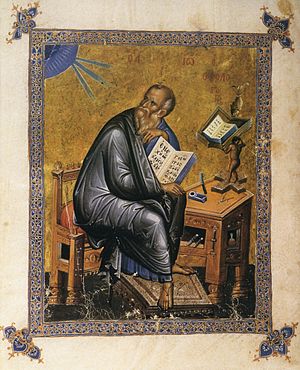Part 1: Turning Mark Inside Out
In a comment to Neil’s post, Discovering the Sources for the First Gospel, 3 — Criteria, from way back in May of 2012, I introduced a way to explain how the Fourth Evangelist may have used the Gospel of Mark. It might not be a novel approach — there is no new thing under the sun — and I certainly don’t have access to all the commentaries and exegeses on John. However, it’s new to me.

For simplicity’s sake, here’s my comment, with some minor edits:
In Mark 15:37, Jesus “breathes his last.” In the following verse the temple curtain is torn from top to bottom. And in verse 39, the centurion declares him to be the Son of God.
Key words to notice in verse 15:36 are (1) ἐσχίσθη (eschisthē) — “was torn” and (2) ἄνωθεν (anōthen) — “from [the] top.” A close, literal translation of the verse might be: “And the veil of the temple was torn in two from the top to the bottom.”
In John, conversely, at the beginning of the crucifixion (19:23) the soldiers take Jesus’ belongings and split them among themselves. They divide his garments into four equal piles, but they notice that Jesus’ tunic is formed of a single piece of woven fabric without seams. John says that the tunic was “seamless from the top (anōthen), woven throughout all.” And in the next verse, they decide not to tear (σχίσωμεν (schisōmen)) the tunic, but cast lots for it instead. It was not torn.
The garment John describes has reminded several commentators of the priestly vestment described by Josephus: “Now this vesture was not composed of two pieces, nor was it sewed together upon the shoulders and the sides, but it was one long vestment so woven as to have an aperture for the neck; not an oblique one, but parted all along the breast and the back.” (http://www.ccel.org/j/josephus/works/ant-3.htm)
Continue reading “How John Used Mark: Investigating the Methods of the Fourth Evangelist (Part 1)”
